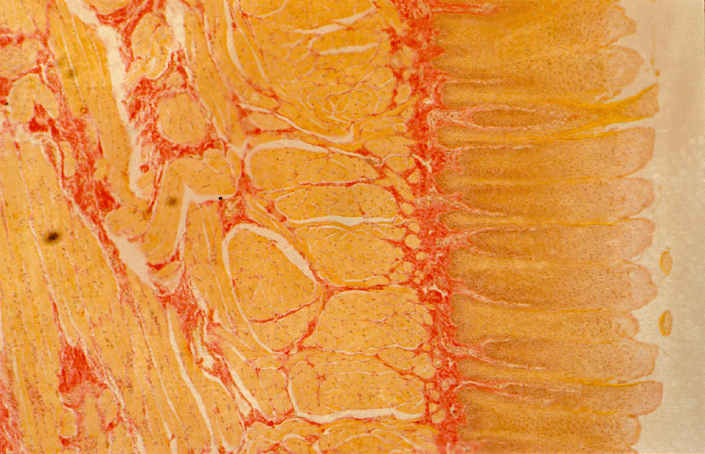HN2.H1.2 +D1 Tongue - Dorsal Surface Epithelium
Tongue - Dorsal Surface Epithelium:
- The tongue is covered in a stratified squamous non-keratinising epithelium on both its dorsal, or superior, surface and its ventral, or inferior, surface
- On the superior surface, the epithelium is thick to accommodate the wear and tear associated with the rasping of food
- The interface between the epithelium and the underlying connective tissue is irregular as is normal when the surface epithelium is subject to shearing forces
- In addition, there are rows of papillae (epithelial projections) which provide a roughened surface to aid rasping
- Several different structural types of papillae are found
- Taste buds are located in the walls of some of the papillae
Micrograph of Tongue, Dorsal Surface Epithelium:
- On the right of the micrograph note the stratified squamous (non-keratinsing) epithelium of the dorsal surface of the tongue
- Compare this epithelium with the epithelium of the ventral surface of the tongue
- In particular, note:
- The irregular surface of the dorsal epithelium (for rasping)
- The thicker dorsal epithelium

